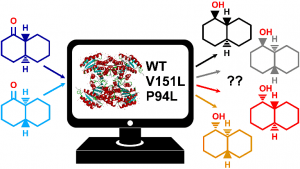BcompB seminar, Monday January 13th, 2-3pm, C42 (Biomedical Sciences Building)
The BcompB seminar in January will be given by Dr David Cole from the company Immunocore. David is a former academic & Welcome Trust Career Development Fellow (at the Cardiff University Institute of Infection & Immunity) and now a group leader at Immunocore, a company that develops T cell receptor mimic therapies (‘biologics’) to target cancer as well as other diseases.
The seminar will include results of soon-to-be-published papers where MD simulation and analysis has contributed significantly to the insights obtained.
Title: In silico development of TCR-based therapies
Abstract:
Soluble bispecific T-cell engagers – next generation cancer immunotherapies:
T cell receptor (TCR)-based therapeutics are currently being developed as the next generation of cancer immunotherapies. A major target for these TCR-based therapies are tumour-associated peptide-human leukocyte antigen complexes (pHLA) because they represent the largest pool of cell surface expressed cancer-specific epitopes.
Engineering a TCR for drug development:
In order to generate a soluble TCR-based drug, we affinity enhance our molecules by over 1-million-fold so that stick to the cancer cell for many hours. We then fuse a T cell stimulator to the other end, effectively turning all of the T cells in a patient’s blood into potential cancer killers. The enhanced affinity of the TCR also ensures potency against even the lowest levels of peptide-human leukocyte antigen complexes (pHLA). These drugs (called ImmTACs) are currently being tested in several clinical trials for a range of diseases.
Computational approaches for uncovering biological mechanisms and developing next generation TCR-based drugs:
Here, the use of structural and computational approaches will be discussed as tools to, 1) better understand the TCR-pHLA interactions, 2) uncover the molecular rules that enable TCRs to be engineered with very strong binding affinities, and 3) develop in silico-based rationale design approaches to generate TCRs with improved specificity and potency for the next generation of TCR-based drugs.

